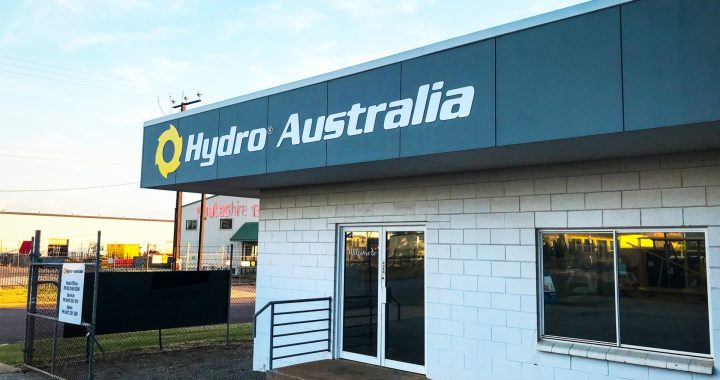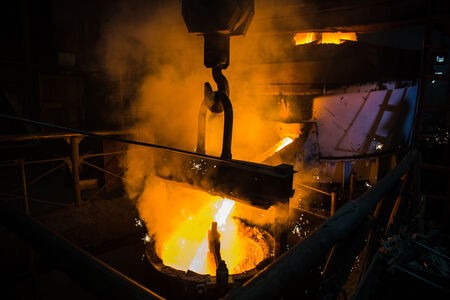Hydro Reliability Services was called into a combined-cycle plant to determine the condition of the plant’s two condensate pumps. Losing one of the pumps to failure would cause the plant to be vulnerable to unplanned downtime and huge expenses.
News
New Service Center Opens in Darwin Australia
Meet Hydro Australia’s newest service center in Darwin.
Hydro Australia provides engineered upgrades, quality pump repair, and on-site field service to pump users in Australia, New Zealand, Vietnam, and Southeast Asia. Hydro engineers can identify and solve the root cause of pump problems and can re-engineer critical equipment to eliminate recurring issues and minimize downtime costs.
As an independent company, Hydro Australia offers an unbiased view of all pump challenges. Hydro Australia is an ideal partner in providing independent analysis, long-term solutions, and expedited turnaround time for your critical pumps and systems.
Hydro Parts Solutions Offers Difficult-to-Source Cast Parts
Hydro Parts Solutions offers difficult-to-source cast parts such as impellers, diffusers, discharge heads, casings, bowls, and suction bells. Whether you are working with obsolete or troublesome pumps, Hydro’s core knowledge and expert reverse engineering, supported by the latest technology, allows customers to achieve optimal results for their parts solutions needs. With Hydro, you can minimize downtime, avoid disruption, and reduce costs.
Introducing: Hydro University
Hydro, Inc., the largest independent pump rebuilder in the world, announces Hydro University.
With over 50 years of experience repairing, rebuilding, and optimizing pumps from all OEMs, Hydro’s team is uniquely qualified to teach and engage the next generation of industrial pump users. Hydro University is a focused resource for providing hands-on, industrial knowledge and applicable pump knowledge to optimize industrial operations and reduce maintenance costs.
“Hydro University is a truly unique offering,” says George Harris, owner and founder of Hydro, Inc. “Hydro has always been a leader in pump repair and pump health. We’re in a digital world now, and e-learning is aligned to 21st-century business. Hydro University lets us use new technologies to share practical knowledge on pump design, efficiency, and reliability. Digital learning through Hydro University is convenient, flexible, interactive, and serves many different learning styles,” Harris adds.
Mike Mancini, Hydro President of Total Solutions and Hydro University trainer, believes that the enhanced graphics make a significant difference in pump learning. “Hydro University uses 3D modeling for pumps in our training. We take you directly inside a pump and show you each element and how its performance affects efficiency, optimization, and energy savings,” Mancini shares. “Knowledge and experience in these areas help you improve your pump performance and reduce maintenance costs,” Mancini shares.
“Pumps are complex equipment, and the proper care of a pump will keep your line running and can even optimize energy efficiency for your overall operation,” states Bob Jennings, Hydro University Trainer and Hydro, Inc. Manager of Energy Upgrades. “At Hydro University, we are teaching about best efficiency points, vibration analysis, affinity laws’ use for system changes, and pump design configurations,” Jennings states.
Hydro University will offer webinars, e-learning courses, seminars, and applied knowledge. On-line classes are available both live and on-demand. Training programs are designed for individuals seeking to expand their knowledge or skills and for companies looking to educate/train groups of employees. Some classes offer certificates for Personal Development Hours and Continuing Education credits. When safe to do so again, Hydro University will offer in-person training programs.
Pump Fundamentals (for Technicians and for Engineers), Introduction to Shaft Alignment, Generic Failure Modes, Inspection Guidelines, and Vibration Fundamentals are a few of the e-learning courses available today. Available webinar topics include NPSH, Pump Curves/Operate at BEP, Basic Pump Design, Introduction to Vibration Concepts, and Pump Testing. Hydro University program offerings are quickly expanding, including the availability of programs tailored to specific customer needs.
For more information visit www.hydroinc.com/hydro-university or contact Hydro University here.
Repairing a Fleet of Pump Trains After Hurricane Harvey
HydroTex repaired and tested a batch of over 20 pump trains from a Texas energy company. Due to the way the pumps were stored, each came with its own set of unique challenges.
In 2008, a large energy company in Texas purchased over 20 complete pump trains, including motor skids, pumps, and all the components. While they were waiting to be installed, the pumps were store in a laydown yard and suffered severe water damage when Hurricane Harvey, a category 4 storm, made landfall in Texas in August 2017, causing catastrophic flooding throughout the area. To complicate matters further, in 2019, Tropical Storm Imelda caused further damage to the equipment.
In early 2020, the energy company sent the weather-damaged equipment to HydoTex Golden Triangle in Beaumont, Texas for a complete evaluation, repair, and high-quality performance testing.
All 20+ pump trains had similar damage, but each one had its own unique repair scope. HydroTex was able to create plans to appropriately refurbish all of the pumps. The plans ensured that the pumps would be tested to verify proper mechanical and hydraulic performance. HydroTex initiated reverse engineering on all the equipment and major components while sending the motors to a vendor in Baton Rouge, Louisiana.
To verify the quality of each repair scope, HydroTex offered to include a mechanical run test of each pump and Hydro’s Performance Test Lab in Chicago. The mechanical run test would verify that the refurbished pump operated with minimal vibrations and expected thermal increases during operation. This test would provide assurances to the end-user that when it comes time to install each pump that they can expect reliable performance and an extended lifespan of the pump.
In addition to a mechanical run test, the Hydro’s test lab was able to provide a complete hydraulic performance test. By adding this service, the end-user would be able to confirm that the pumps would meet the process conditions necessary to perform when installed. The assurance of mechanical performance and hydraulic performance provided the best decision-making information to the end-user, setting them up for long-term success with these pumps, and building trust in the quality of the repair.
The fully refurbished and performance-tested equipment is now stored in an indoor storage facility rather than an open yard with exposure to the elements.
The 20+ pump trains were prioritized into three sets. HydroTex delivered all the refurbished equipment in record time—less than a year. Even with delays caused by a global pandemic, HydroTex was able to deliver the first priority set, with the second set delivered a month later, and the third set delivered within the following month. Each had to be individually assessed with specific plans of action and specific performance testing.
Some of the repairs required were more intricate and meticulous than others. These are complete pump trains and not only individual pump repair. HydroTex also repaired all the skids, all the seal changes, all couplings, and coupling guards, the bases, and the foundations.
Read the article in Pumps & Systems here.





